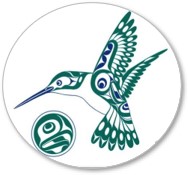The Tragedy of Canada's Residential School System
Essay by Ronald V. Evans B.A. M.Div. (retired high school teacher)
I have a confession to make. For decades I thought I was knowledgeable and inclusive of the First Nations, Inuit and Métis. I knew many had long-standing problems: alcoholism, fetal alcohol spectrum disorder, inadequate housing, unsafe drinking water, family breakdowns, domestic violence and abuse. I knew many lived in poverty and relied on welfare. I knew their suicide rate was tragically high, especially among young people. I knew a disproportionate number of prison inmates were Indigenous. But I did not understand WHY. Then a disturbing event occurred in 2021.
Read more ...
FIRST CONTACT
Canadians’ opinions about the Indigenous people of this country are often formed without any knowledge of the culture’s true history or firsthand experience of the present-day communities. This may explain the prevalence of racist, unsympathetic and generally prejudicial attitudes that are often directed towards Indigenous peoples.
First Contact takes six Canadians on a 28-day journey intended to challenge these attitudes and shed a light on the true Indigenous experience. The travelers have been invited to leave their everyday lives behind and embark on a unique journey, travelling deep into the Indigenous communities throughout Canada including the nation’s capital, Algonquin Anishanabek Territory, Labrador, Saskatchewan and the Yukon. It is a journey that will challenge their perceptions and confront their prejudices about a world they never imagined they would see. This exploration of the true Indigenous experience in Canada will change the participants’ lives forever.
First Contact is free to view online. Click here.
We walk this beautiful land that we call home. Many have walked before us. They breathed this air, trod on this earth, ate the fruits and drank the water with respect. First Contact is an opportunity to hear the truth about the strength and beauty that grows from our shared land. This is an opportunity to set aside old standards. If you are able, watch all three episodes, and be prepared to open your mind to truth.
First Contact is free to view online. Click here.
HIP Learn & Share
Focus: Honouring Indigenous Peoples have compiled assorted lists of educational, cultural and event videos; recommended readings; thought-provoking podcasts; links to cultural centres, reports and more.
The Canadian Encyclopedia
Focus: The Canadian Encyclopedia is the national encyclopedia of Canada, published online by the Toronto-based historical organization Historica Canada, with the support of Canadian Heritage. The Canadian Encyclopedia is comprised of several collections including
Indigenous Peoples,
First Nations,
Indigenous Treaties in Canada,
Inuit, and the
Métis collections. Each collection contains essays and articles with links to many additional resources.
Indigenous Peoples in Canada
Summary: There are three categories of Indigenous peoples in Canada:
Inuit,
Métis and
First Nations. The Inuit primarily inhabit the northern regions of Canada. Their homeland, known as Inuit Nunangat, includes much of the land, water and ice contained in the Arctic region. Métis peoples are of mixed European and Indigenous ancestry, and live mostly in the Prairie provinces and Ontario, but also in other parts of the country. First Nations peoples were the original inhabitants of the land that is now Canada, often occupying territories south of the Arctic.
Treaties with Indigenous Peoples in Canada
Source:
The Canadian Encyclopedia - Treaties with Indigenous Peoples in Canada
Summary: The complex history of treaty making in Canada can be explored by examining four significant eras: early treaties made before the
Conquest, those signed between 1763 and
Confederation, treaties made between 1867 and the first modern treaty in 1975, and those negotiated from 1975 to the present. A close look at treaties in the context of constitutional and international law also reveals much about the place of treaties in Canada’s domestic and international affairs.
Article - Living With Treaties
Summary: Not unlike communities in Europe or elsewhere, the Indigenous peoples of North America confirmed access to resource sites, facilitated trade, resolved conflicts, settled alliances, and navigated the mass of other relations with their neighbours by negotiating agreements. When European newcomers found their way into Indigenous territories, they realized it was in their interest, and often necessary for their survival, to learn Indigenous treaty protocols and to fit themselves into Indigenous commercial networks. After these initial encounters, over time, treaty making changed in intent and content, but whether for military alliance, access to land and resources, or for some other reason, all of those involved understood that only agreements of this sort could protect the often divergent strategic, cultural, and economic interests of the treaty partners.
Article - 6 Common Myths about Treaties in Canada
Summary: The phrase, “we are all treaty people” is an effective way of expressing the legal obligations that all Canadians have to uphold the terms of the treaties. And in order to ensure that they are not breaking the contract, Canadians must educate themselves about the obligations and responsibilities they have to Indigenous nations and to the land.
Books:

